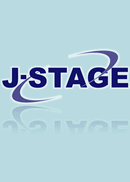Volume 55, Issue 2
Displaying 1-16 of 16 articles from this issue
- |<
- <
- 1
- >
- >|
-
Article type: Cover
2004Volume 55Issue 2 Pages Cover3-
Published: June 15, 2004
Released on J-STAGE: November 01, 2017
Download PDF (252K) -
Article type: Cover
2004Volume 55Issue 2 Pages Cover4-
Published: June 15, 2004
Released on J-STAGE: November 01, 2017
Download PDF (252K) -
Article type: Index
2004Volume 55Issue 2 Pages Toc2-
Published: June 15, 2004
Released on J-STAGE: November 01, 2017
Download PDF (31K) -
Article type: Article
2004Volume 55Issue 2 Pages 59-68
Published: June 15, 2004
Released on J-STAGE: November 01, 2017
Download PDF (793K) -
Article type: Article
2004Volume 55Issue 2 Pages 69-76
Published: June 15, 2004
Released on J-STAGE: November 01, 2017
Download PDF (721K) -
Article type: Article
2004Volume 55Issue 2 Pages 77-88
Published: June 15, 2004
Released on J-STAGE: November 01, 2017
Download PDF (1049K) -
Article type: Article
2004Volume 55Issue 2 Pages 89-94
Published: June 15, 2004
Released on J-STAGE: November 01, 2017
Download PDF (549K) -
Article type: Article
2004Volume 55Issue 2 Pages 95-103
Published: June 15, 2004
Released on J-STAGE: November 01, 2017
Download PDF (1022K) -
Article type: Article
2004Volume 55Issue 2 Pages 104-109
Published: June 15, 2004
Released on J-STAGE: November 01, 2017
Download PDF (549K) -
Article type: Appendix
2004Volume 55Issue 2 Pages App6-
Published: June 15, 2004
Released on J-STAGE: November 01, 2017
Download PDF (32K) -
Article type: Appendix
2004Volume 55Issue 2 Pages App7-
Published: June 15, 2004
Released on J-STAGE: November 01, 2017
Download PDF (86K) -
Article type: Appendix
2004Volume 55Issue 2 Pages App8-
Published: June 15, 2004
Released on J-STAGE: November 01, 2017
Download PDF (62K) -
Article type: Appendix
2004Volume 55Issue 2 Pages App9-
Published: June 15, 2004
Released on J-STAGE: November 01, 2017
Download PDF (62K) -
Article type: Appendix
2004Volume 55Issue 2 Pages App10-
Published: June 15, 2004
Released on J-STAGE: November 01, 2017
Download PDF (62K) -
Article type: Appendix
2004Volume 55Issue 2 Pages App11-
Published: June 15, 2004
Released on J-STAGE: November 01, 2017
Download PDF (62K) -
Article type: Appendix
2004Volume 55Issue 2 Pages App12-
Published: June 15, 2004
Released on J-STAGE: November 01, 2017
Download PDF (62K)
- |<
- <
- 1
- >
- >|
